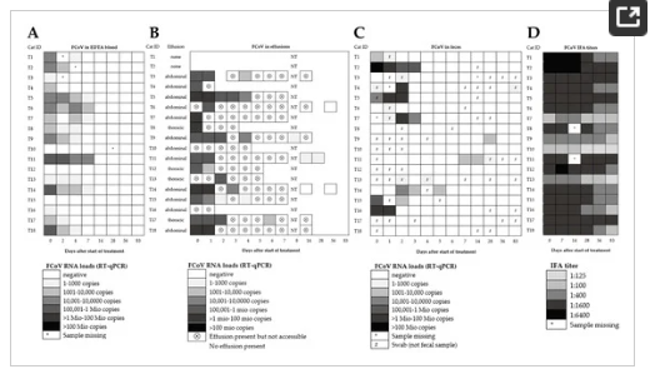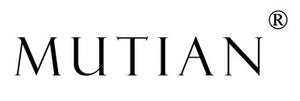Fecal Feline Coronavirus RNA Shedding and Spike Gene Mutations in Cats with Feline Infectious Peritonitis Treated with GS-441524
Clinical Laboratory, Department of Clinical Diagnostics and Services, Center for Clinical Studies, Vetsuisse Faculty, University of Zurich, CH-8057 Zurich, Switzerland
Clinic of Small Animal Medicine, Centre for Clinical Veterinary Medicine, LMU Munich, D-80539 Munich, Germany
Section of Clinical & Comparative Neuropathology, Institute of Veterinary Pathology, Centre for Clinical Veterinary Medicine, LMU Munich, D-80539 Munich, Germany
Division of Paediatric Infectious Diseases, Dr. von Hauner Children’s Hospital, University Hospital, LMU-Munich, D-80337 Munich, Germany
German Center for Infection Research (DZIF), Partner Site Munich, D-80337 Munich, Germany
*Author to whom correspondence should be addressed.
† These authors contributed equally to this work.
Viruses 2022, 14(5), 1069; https://doi.org/10.3390/v14051069
Received: 29 March 2022 / Revised: 8 May 2022 / Accepted: 13 May 2022 / Published: 17 May 2022
Abstract
As previously demonstrated by our research group, the oral multicomponent drug Xraphconn containing GS-441524 was effective at curing otherwise fatal feline infectious peritonitis (FIP) in 18 feline coronavirus (FCoV)-infected cats. The aims of the current study were to investigate, using samples from the same animals as in the previous study, (1) the effect of treatment on fecal viral RNA shedding; (2) the presence of spike gene mutations in different body compartments of these cats; and (3) viral RNA shedding, presence of spike gene mutations, and anti-FCoV antibody titers in samples of 12 companion cats cohabitating with the treated cats. Eleven of the eighteen treated FIP cats (61%) were shedding FCoV RNA in feces within the first three days after treatment initiation, but all of them tested negative by day 6. In one of these cats, fecal shedding reoccurred on day 83. Two cats initially negative in feces were transiently positive 1–4 weeks into the study. The remaining five cats never shed FCoV. Viral RNA loads in feces decreased with time comparable with those in blood and effusion. Specific spike gene mutations linked to systemic FCoV spread were consistently found in blood and effusion from treated FIP cats, but not in feces from treated or companion cats. A new mutation that led to a not yet described amino acid change was identified, indicating that further mutations may be involved in the development of FIP. Eight of the twelve companion cats shed FCoV in feces. All but one of the twelve companion cats had anti-FCoV antibodies. Oral treatment with GS-441524 effectively decreased viral RNA loads in feces, blood, and effusion in cats with FIP. Nonetheless, re-shedding can most likely occur if cats are re-exposed to FCoV by their companion cats.
3.Results
3.1. Treatment Study
Clinical outcomes of successful treatment in cats T1–18 have been described in detail previously [43]. Briefly, all cats survived, demonstrating a full clinical recovery within 84 days after treatment initiation [43]. In all cats, clinical (Karnofsky score, body temperature, and body weight) and laboratory parameters (hematocrit, lymphocyte count, bilirubin, total protein, albumin, globulin, and serum amyloid A concentrations) improved constantly and significantly within the first few days of treatment [43]. The number of cats with effusion had decreased significantly by day 14 after treatment initiation, in comparison to day 0 (pFisher = 0.0045; Figure 1Table 2). On day 83, effusion was no longer present in any of the cats.

Figure 1. Feline coronavirus (FCoV) viral RNA loads in different compartments and anti-FCoV titers of treated FIP cats (adapted from [43]). (A) EDTA anti-coagulated blood; (B) Effusions; (C) Voided fecal samples or fecal swabs; and (D) Antibody titers. FCoV RNA loads were determined by quantitative reverse transcription polymerase chain reaction (RT-qPCR) (A–C). Antibody titers were determined by indirect immunofluorescence assay (IFA). NT, not tested.
